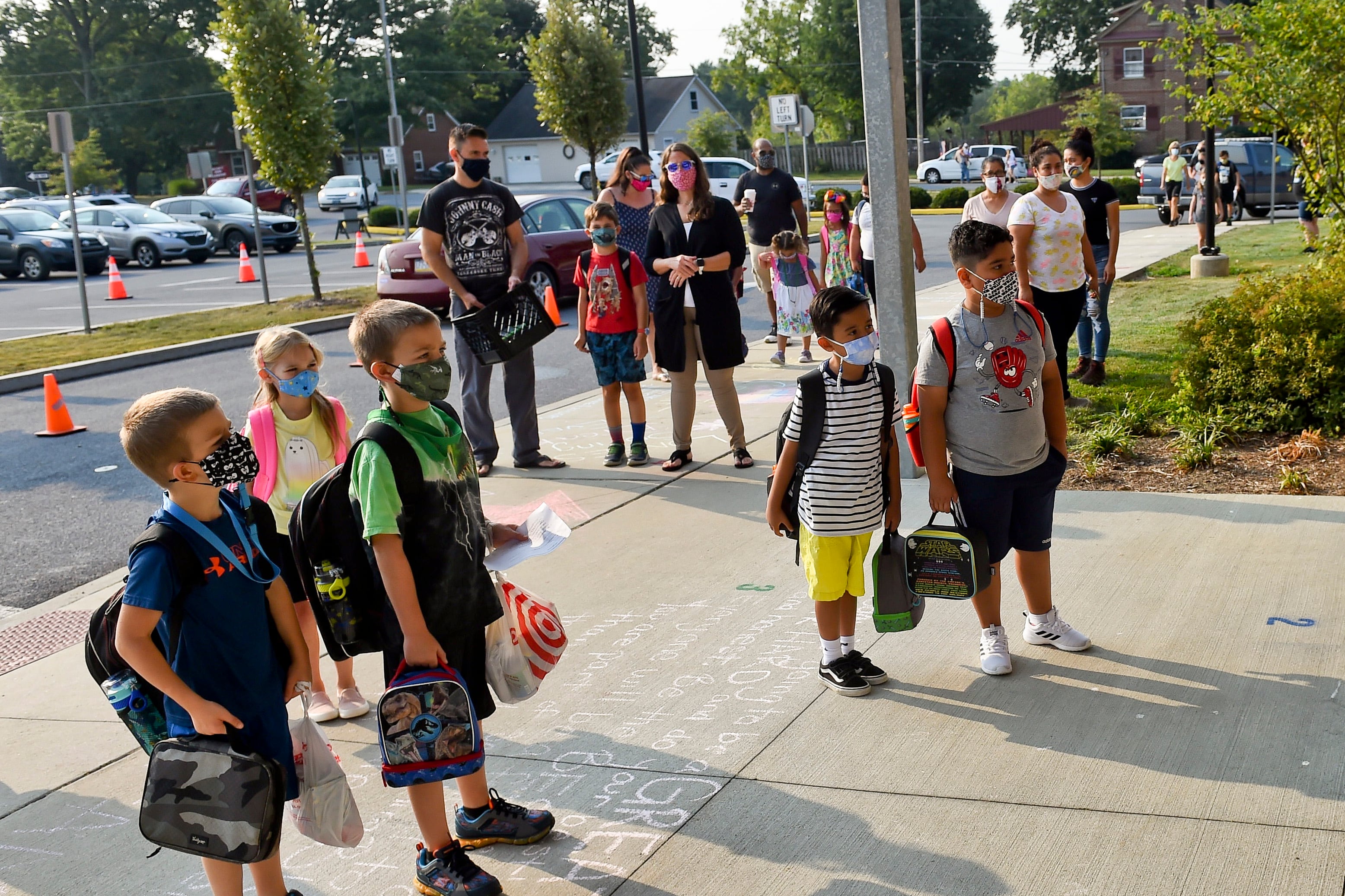Opening school buildings doesn’t increase the spread of COVID-19 in places where cases or hospitalizations from the virus are rare, according to two new studies.
Reopening schools in areas with higher caseloads, though, does spread the virus, one found, while the other couldn’t rule out that possibility. It remains unclear exactly at what point school reopening becomes more risky.
The papers are the most rigorous efforts yet to understand the link between schools and COVID spread in the U.S. It’s research that could guide school officials and health officials grappling with whether to reopen or keep open school buildings. But there aren’t simple answers for places with higher numbers, at a moment when some counties are seeing COVID cases peak.
“It appears that, when hospitalizations rates are low, it is safe to reopen schools in person,” said Douglas Harris, a professor at Tulane University who co-authored one of the studies, which examined national data. “This is important given the side effects of closure for students, such as limiting access to essential services, social isolation, and learning loss.”
At the same time, his co-author Engy Zieden warned that these conclusions don’t apply everywhere. “Given the recent spike in hospitalizations in recent months, policymakers should be cautious,” she said. “It may not be safe to reopen schools where the virus is already widespread.”
The national study, released Monday, examined whether opening schools increased COVID hospitalization rates in surrounding communities. The answer was no, up to a certain point of pre-existing COVID spread: between 36 and 44 hospitalizations per 100,000 people per week.
When baseline hospitalization levels were lower, opening schools was, if anything, linked to fewer future hospitalizations. But when hospitalizations were already above that level, the researchers can’t say for sure whether opening schools made the situation worse. (Different ways of crunching the numbers lead to different conclusions.)
As of mid-December, a little more than half of U.S. counties had hospitalization rates low enough to suggest schools could reopen without triggering further spread, Harris said.
The second study, released in late December, looked at Michigan and Washington. It tested whether districts that offered in-person instruction this school year saw higher rates of COVID in the surrounding community as a result.
Where COVID numbers were already low, schools didn’t seem to contribute to the virus’ spread. But where pre-existing rates were higher, the risks of school opening were higher, too. In Michigan, that threshold was roughly 20 new daily cases per 100,000 people, at which point in-person schooling seemed to increase case counts. In Washington, the bar was even lower: about five cases per 100,000.
“Once you get to a certain point of community infection rates, it does look like being in-person … is associated with COVID spread in the community,” said Katharine Strunk, an author of the study and professor at Michigan State University.
In both states, nearly every county now has case numbers above those levels. Much of the country is also far above these levels: Los Angeles is seeing 141 cases per 100,000 residents, Miami-Dade County is at 92, and Cook County, which includes Chicago, is at 41. The country as a whole is at over 60 cases per 100,000 residents.
The results aren’t entirely surprising to public health experts, who have long said that controlling the virus more broadly is the best way to ensure that schools can reopen.
But the question remains, for large swaths of the country, how to balance potential risks of school opening with the risks of keeping them closed, given the benefits of in-person school for students and already-documented learning loss.
“We’re not coming down strongly and saying any school or district should reopen in person or not,” said Harris.
Rebecca Haffajee, a public health researcher at RAND, said local school officials should focus on whether they’re seeing spread within schools and the safety measures they can put in place. “To some degree you have to go with what exactly is happening in your district,” she said.
Less than half of American students currently attend a district that is offering in-person instruction, according to a recent estimate.
School and health officials making those calls face continued staffing shortages as well as the continued reluctance of many teachers and parents to return to school buildings. Another issue may be the new strain of the virus, which recently emerged in the U.S. and appears to be especially contagious. England, where the variant originated and is rapidly spreading, announced plans Monday to shutter all of its schools.
“That strain is particularly concerning to me,” said Haffajee. “It may change the way we think about transmission in schools simply because the strain is much more transmissible as a general matter.”
On a more positive note, the vaccine is being rolled out nationwide. Some states plan to prioritize access for teachers, which could make reopening schools more viable.
“These are very tough decisions for families, teachers, staff, and districts, especially in light of the awful level of transmission, hospitalization, and deaths we’ve been seeing in the past weeks,” said Whitney Robinson, an epidemiologist at the University of North Carolina.





